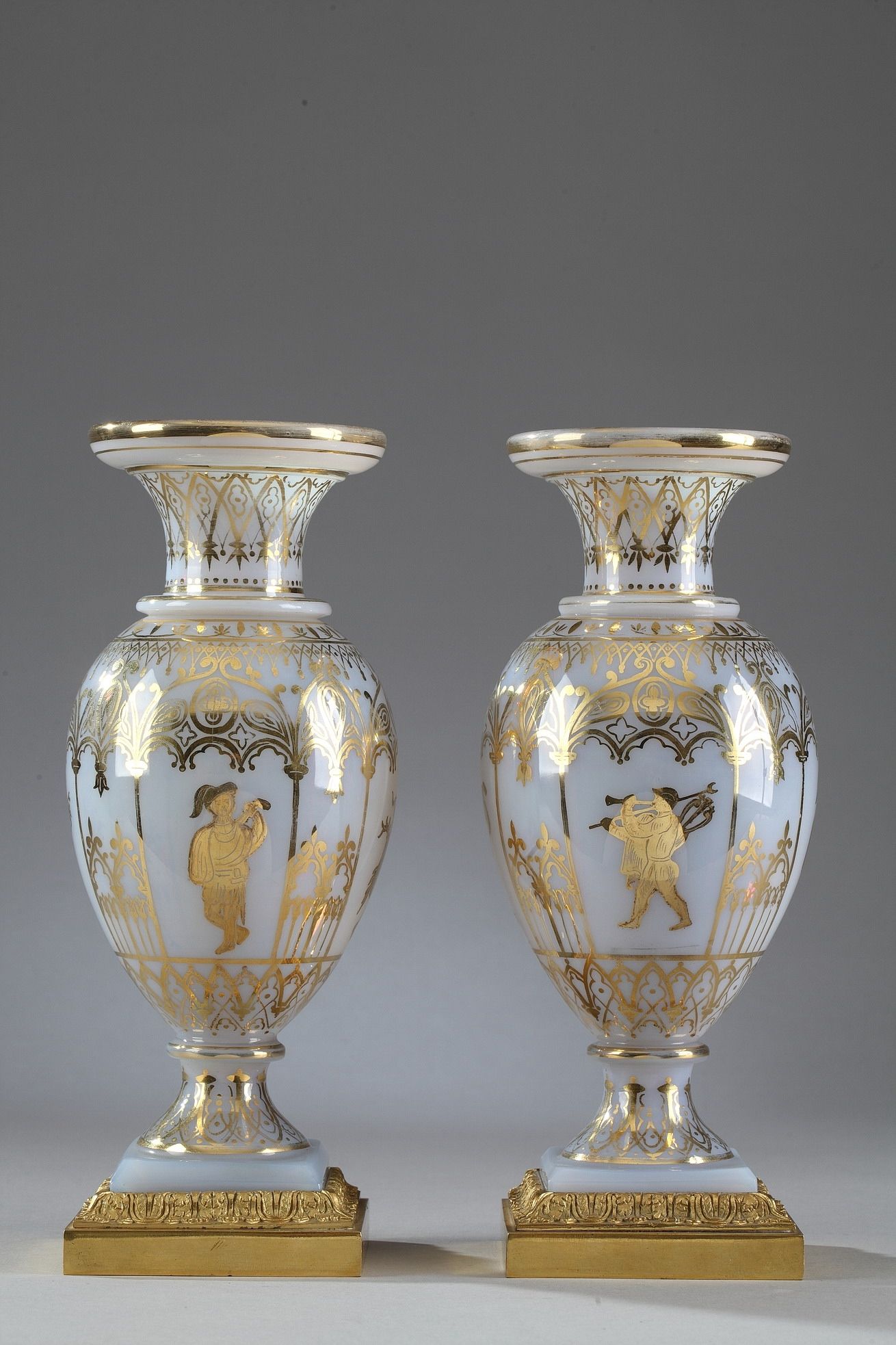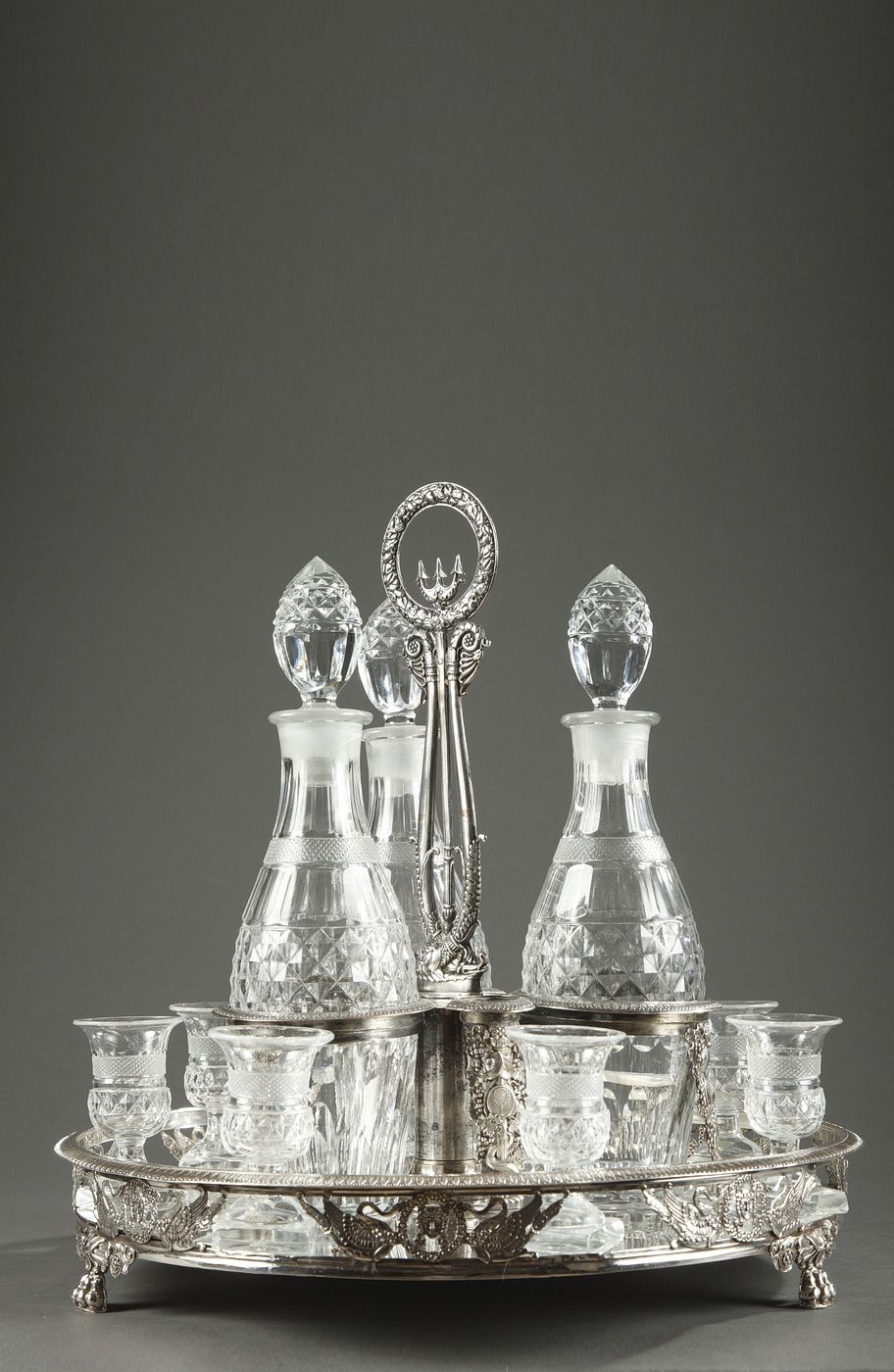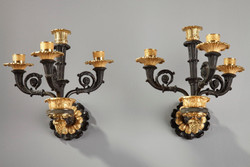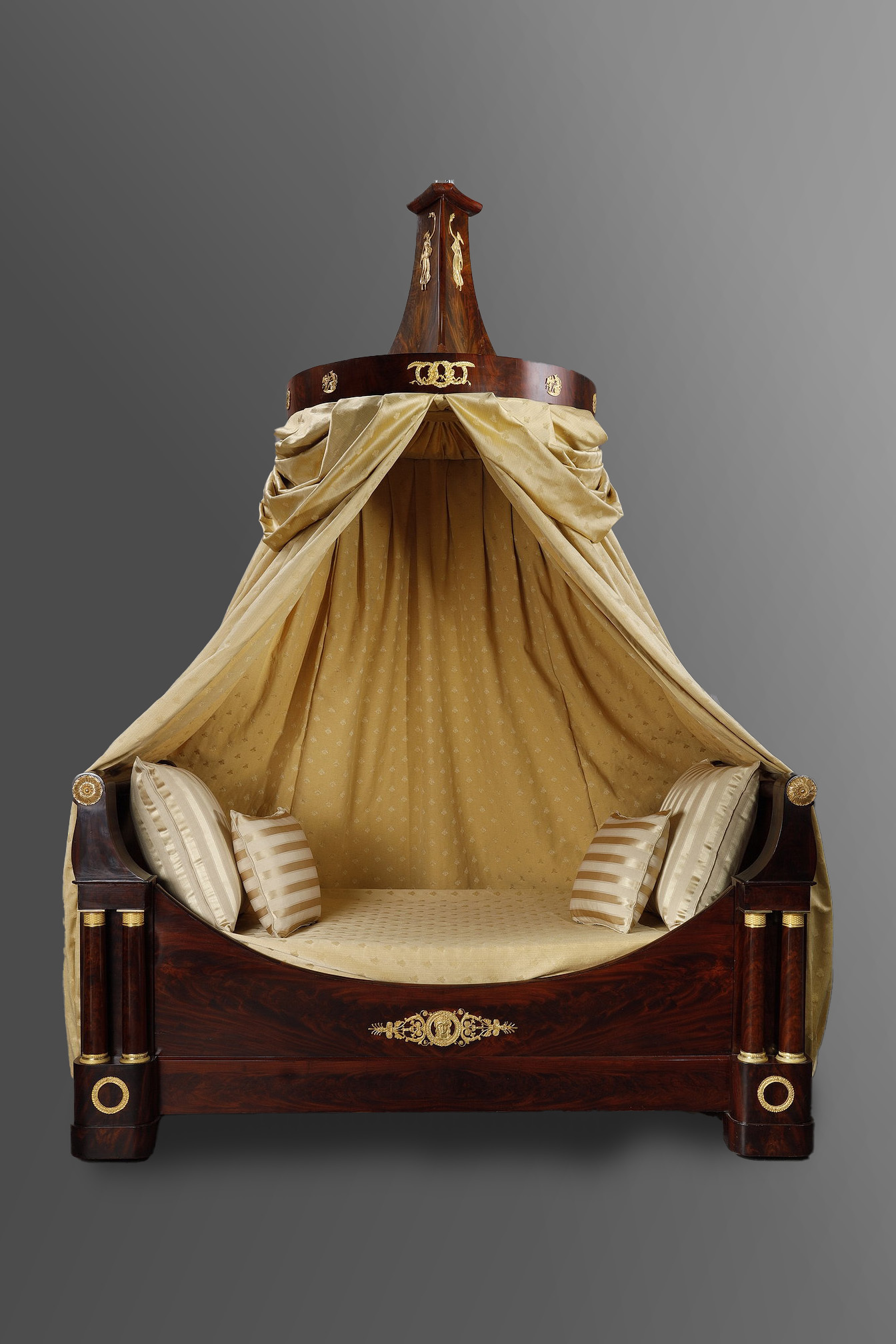The Restoration style (1815-1830)
19.10.14
After Napoleon's defeat at Waterloo on June 18, 1815, power in France was taken over by Louis XVI's two brothers: the Count of Provence, who reigned as Louis XVIII (1815-1823), then the Count of Artois, known as Charles X, who ruled until 1830, when he was overthrown by the July Revolution and replaced by a new king, Louis-Philippe I (1830-1848).
The period known as the Restoration (1815-1830) was first and foremost a reaction against the pomp and pageantry of the Empire. It imposed an elegance and refinement in furnishings and decoration that Napoleon's taste for grandeur and glamour had, in a way, obscured. But under the Restoration, it was no longer the royal family or wealthy aristocrats who set the tone. Fashion now adapted to the needs and tastes of the new bourgeois society, who rented apartments in Paris of varying degrees of luxury, adapted to family life.
Restoration Bed and its Canopy
The concept of comfort was influenced by a certain English art of living. Regency-style furniture was imported from England, notably chests of drawers. Mahogany, considered too heavy, was replaced by blond woods. Imposing furniture, adorned with bronzes, gave way to smaller, finely carved or inlaid pieces. As in the Regency period a century earlier, the vast halls of official palaces were abandoned in favor of the intimate charm of small salons and boudoirs.
But this change of style did not call into question certain essential elements of the decor, which remained deeply inspired by the previous era. Thus, the Restoration continued the neo-classical tradition cherished by Napoleon I and brought it to an unprecedented degree of refinement.
At the same time, Romanticism sought inspiration in an imaginary Middle Ages that combined classical ornamentation with the rosettes, festoons and ogives of Gothic cathedrals, in vogue under Charles X.
 Gothic vase by Jean-Baptiste Desvignes
Gothic vase by Jean-Baptiste Desvignes
Furniture, materials and techniques
Restoration furniture exudes an elegant harmony: graceful, comfortable, light and easy to handle. As a general rule, it retains the sober, slightly curved forms of the Empire. However, the structure is softened, dimensions are reduced to fit smaller interiors, and curves are increasingly evident in the form of scrolls, arabesques, bracketed armrests and saber feet.
Restoration period furniture is made up of pieces considered essential: chests of drawers for easy storage, large round tables for the dining room, flat desks or secretaries, wardrobes and sometimes dressing tables in the bedroom.
In the living room, the chaise longue sofa introduced under the Empire is still in use. Small tables and pedestal tables with marble tops are arranged near various types of comfortable seats, including gondola armchairs . The seats adapt to this style by having backs cut into Gothic windows, flanked by uprights that end in bell towers inspired by the stone pinnacles of cathedrals. Renaissance motifs are sometimes added to the stylistic elements of medieval monuments and furniture.
Craftsmen of this period were equally adept at using wood veneer, solid wood and inlay techniques.
Restoration furniture is characterized by the use of light woods (elm, ash, spotted beech, sycamore, amber maple, lemon and orange) inlaid with dark woods (mahogany, rosewood and amaranth). More rarely, and mainly during the reign of Charles X, dark woods are inlaid with blond woods, sycamore or lemon fillets in particular.
The inlaid motifs created by the carpenters and cabinetmakers of this period are of exceptional quality and finesse. The decorations of fillets, rosettes, stylized palmettes, flowering branches and foliage are finely executed, and resemble true goldsmith's work. They play the same decorative role as the gilded bronzes that adorn Empire furniture, used as a source of inspiration.
Ornamentation
The light, highly refined ornamentation emphasizes the structure of the furniture. Molding, abandoned under the Empire, reappears delicately on consoles, secretaries, tables and imposing pieces of furniture such as bookcases.
Some decorative motifs from the Empire style survive, but in a simplified form. Among the most commonly used are the palmette—rounder, smaller, and stylized—the cornucopia, the lyre, the swan, the star, and dolphins. Less commonly found are chimeras, griffins, and sea horses. However, Restoration motifs differ from Empire motifs in their treatment, which is much lighter and less formal than in the previous era.
Classic motifs include oves, strings of pearls, foliage scrolls, gadroons, garlands or bouquets of flowers, ribbons and wreaths.
 Restoration period console with lion's paw and palmettes decor (details)
Restoration period console with lion's paw and palmettes decor (details)
In addition to allegorical motifs and antique motifs (Amours, Psychés, Adonis, columns, piastres, straight cornices) inherited from the previous period, Gothic motifs invade furniture and objects, and constitute the novelty of this period. Everyday objects, from the most modest to the most luxurious "à la cathédrale" or "troubadour", such as vases, clocks, torches, inkwells, flacons and chests, were covered with details inspired by fenestration, rosettes, pointed arches, arcatures, festoons, lacework and stone belfries. Under Charles X, the "Gothic" taste was the first reaction to the ubiquitous antique style defined by Percier and Fontaine in the early 19th century.
La verrerie Restoration
One area that reached its peak in the mid-1820s was glassmaking. The era of Charles X is considered with producing the most refined and sumptuous cut crystal. Indeed, the years 1815-1830 represent a true golden age of glass in France, whose fame was international thanks to the exceptional productions of Baccarat, Creusot, Choisy-le-Roi and Bercy crystal factories.
Remarkable for their quality, cast crystal and diamond-cut objects are mounted in silver or gilded bronze, finely chased with dolphins, swans or horns of plenty. Ram heads or coiled snakes often form the handles.
 Jewelry box in cut crystal and bronze frame, Charles X period
Jewelry box in cut crystal and bronze frame, Charles X period
After 1814, shapes were no longer dictated by the Court and therefore no longer obeyed a precise aesthetic program. They were inspired by the recently enriched classes, who imposed their taste on fashionable objects such as opal-colored glasses.
Opaline is used to make boxes, bottles and vases. Around 1820, technical advances in the glass industry marked the history of opaline, which saw the emergence of new shapes and decorations. It was during this period that "cornet" vases, round flasks with ball caps, bowls, bonbonnières, scent cellars and other fancy objects made their appearance. Bronze mounts are finely chased with motifs common to the Restoration and Empire periods, such as dolphins, swans, doves and drinking birds.
Pair of opaline vases with Desvignes decoration
In this context, Jean-Baptiste Desvignes (1786-1826), painter and gilder on glass, crystal and porcelain, found a way to paint on opaline. He used gold or silver leaf and purely vegetable colors, which he glued onto the opal crystal. Matt tones are limited to dark blue and red. Gilding dominates, in the form of clear, fine designs in palmettes, florets and garlands. On some chests and bowls, Desvignes applied "Gothic" decorations. He also executed small illustrative scenes inspired by the fables of La Fontaine, in delicately muted hues of blue, soft green, ochre and mauve, with gold or silver flecks.
Overlay glass bottles were also very successful under Charles X. This decoration process consists of lining the crystal with a layer of white or coloured enamel. It was discovered by the Englishman Joseph Prince of Durham, who filed his patent in 1814. Formed by two layers of glass, half-crystal or crystal of different colours, the decoration is made using two different methods corresponding to either an interior or exterior lining. In most cases, the outer layer is made of white or coloured enamel. The lining requires a cut decoration. In order to uncover the inner layer, the cutter cuts into the outer layer and creates different decorations such as pontils, hollow ribs, checkerboard, stars, or cordons. France immediately imported this process. From 1828 onwards, the Bercy crystal manufacture produces opaline overlay, followed some time later by the Choissy-le-Roi crystal factory. Around 1839, Baccarat began to produce lined pieces. In 1844, Saint-Louis also produced doubled and even tripled objects.

Crystal liqueur service, Charles X period
Restoration-period opal glass and crystal remain incomparable for the simplicity and purity of their forms, the delicacy of their nuances and the finesse of their chasing, which became increasingly rare after the time of Charles X.




